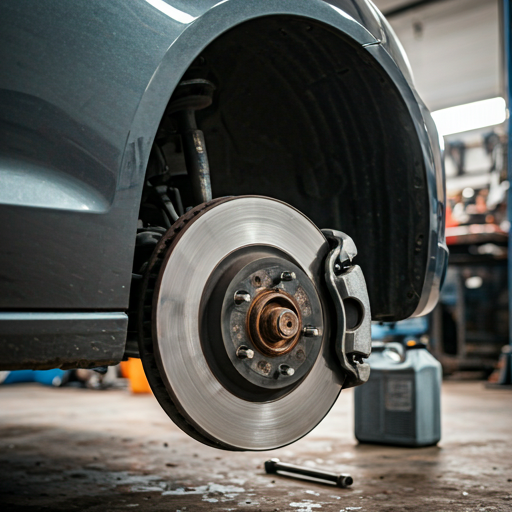
The Importance of Brake Fluid Changes
The Importance of Brake Fluid Change: Essential Car Maintenance You Shouldn’t Overlook
When it comes to car maintenance, some tasks often take precedence over others. While engine oil changes and tire rotations are commonly known, brake fluid replacement tends to be overlooked. However, brake fluid is essential for your vehicle's braking system to function properly, and neglecting its maintenance can lead to significant safety issues. In this blog post, we’ll discuss the importance of brake fluid change, signs that it's time for a replacement, and how often it should be done to ensure your car stays in top shape.
Why Brake Fluid Matters
Brake fluid is a hydraulic fluid that transmits the force you apply to the brake pedal to the brake components, allowing your vehicle to stop efficiently. Without it, your braking system wouldn’t work. Brake fluid also helps lubricate parts and prevents the formation of rust and corrosion inside the braking system.
Most modern vehicles use one of two types of brake fluid: DOT (Department of Transportation) fluids or non-DOT fluids like mineral oil. DOT fluids are the most common, and they come in several varieties, such as DOT 3, DOT 4, DOT 5, and DOT 5.1, each with different properties regarding boiling point, moisture absorption, and temperature tolerance.
Why You Should Change Brake Fluid
Over time, brake fluid can become contaminated with moisture and dirt. Brake fluid naturally absorbs moisture from the air, and excessive moisture can lead to the following issues:
-
Reduced Boiling Point: When brake fluid absorbs moisture, its boiling point drops, which can lead to brake fade or loss of braking power. In extreme cases, this can cause the brakes to fail when they are needed the most, such as during heavy braking on steep roads.
-
Corrosion: Water and contaminants in the brake fluid can cause rust and corrosion inside the brake system components, such as the master cylinder, brake calipers, and brake lines. This can lead to leaks and even damage to your braking system, which can be costly to repair.
-
Decreased Performance: As the brake fluid becomes contaminated, it can lead to a soft or unresponsive brake pedal. This decreases your vehicle's ability to stop quickly, affecting your overall driving safety.
Signs That It’s Time for a Brake Fluid Change
-
Spongy or Soft Brake Pedal: If you notice that your brake pedal feels soft, spongy, or requires more effort to press down, it could indicate air or moisture in the brake fluid. This often signals that it’s time to flush and replace the brake fluid.
-
Brake Warning Light: Many vehicles have a brake warning light on the dashboard. If this light comes on, it could be a sign of low brake fluid or an issue with your braking system. A brake fluid check is a good place to start diagnosing the problem.
-
Brake Fade: If your brakes are losing effectiveness during heavy braking, especially on long drives or downhill stretches, it could be due to the brake fluid reaching its boiling point or being contaminated.
-
Dark or Dirty Brake Fluid: Fresh brake fluid is typically clear or slightly yellowish. If it appears brown or black, this is a sign of contamination and a clear indication that it’s time for a brake fluid change.
-
Unusual Noises: If you hear grinding, squeaking, or high-pitched noises when you brake, this may be a sign that your brake fluid is low or that there is an issue with the brake components. In any case, it’s best to check the fluid levels and the condition of the fluid.
How Often Should You Change Brake Fluid?
The frequency of brake fluid changes depends on your vehicle's make and model, as well as the type of brake fluid used. However, a general rule of thumb is to change brake fluid every 2 to 3 years or approximately every 24,000 to 36,000 miles. Always consult your vehicle’s owner’s manual for manufacturer-specific recommendations.
The Brake Fluid Change Process
A brake fluid change typically involves draining the old fluid from the system and refilling it with fresh fluid. The process may vary slightly depending on the vehicle, but it usually includes the following steps:
-
Check Fluid Level: The mechanic will first check the fluid level and condition of the brake fluid to determine if it needs replacing.
-
Flush the System: The old brake fluid is removed from the master cylinder and brake lines. Some vehicles may have a system flush, while others require bleeding the brakes to ensure the new fluid circulates correctly.
-
Refill with New Brake Fluid: Fresh, clean brake fluid is then added to the brake master cylinder, and the system is pressurized to ensure there are no air pockets.
-
Test the Brakes: Finally, the mechanic will test the brakes to make sure the system is functioning properly with the new fluid.
DIY vs. Professional Brake Fluid Change
While it’s possible to change brake fluid yourself, it can be a challenging task, especially if you’re not familiar with the brake system. A mistake in the brake fluid change process, such as introducing air into the system or using the wrong fluid type, can lead to severe consequences. For this reason, many people prefer to have a professional mechanic perform the brake fluid change to ensure it’s done correctly and safely.
Conclusion
Your car's braking system is a crucial safety feature, and brake fluid plays a vital role in its performance. Changing the brake fluid at regular intervals is a relatively simple yet essential maintenance task that can prevent costly repairs and, more importantly, keep you safe on the road. If you notice any signs of brake fluid issues, don’t wait—schedule a brake fluid change with a professional mechanic today to maintain optimal brake performance.
